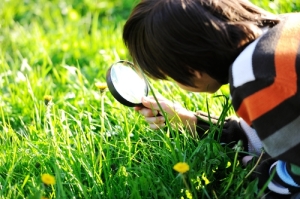The Advantages of Building Curiosity into Learning and 7 Ways to Do It.
by Tess Robinson, Director LAS
“The important thing is not to stop questioning. Curiosity has its own reason for existing.” — Albert Einstein
Our youngest son (7) is the very definition of curious. Every day is a barrage of questions: “Can anything happen in a nanosecond?” “What would happen if we just breathed carbon dioxide?” “Does the toothpaste come out like that (red, white and blue) because it’s French?” His mind is a constant whirr as he tries to make sense of the world. I love that he is like this; that he makes fantastic and creative connections, and tries seemingly impossible things with no fear of failure (and often proves me wrong by succeeding).
Curiosity often gets overlooked in organisational learning but it is being talked about more and more. For example, Julian Stodd’s research on social leadership, gives the first tenet of this new leadership style as to ‘be curious’. He emphasises the importance of not doing something ‘as we have always done it’ but to question and challenge the status quo. But why is curiosity so important in learning? This is why…
This article on lifehack.org, sums it up nicely:
- Curiosity makes your mind active instead of passive
- It makes your mind observant of new ideas
- It opens up new worlds and possibilities
- It brings excitement into your life
Wow!
It’s really difficult to study curiosity, as it is such an individual phenomenon, so consequently there hasn’t been much research on the subject. However, a recent University of California study sought to discover what happened in the brain when people felt curious and what impact this had on their learning.
They asked participants to rate how curious they were to learn the answers to more than 100 trivia questions. During the study MRI scans were carried out to observe what happened in the brain when a participant felt particularly curious about one of the answers.
Charan Ranganath, a neuroscientist involved in the research said that curiosity seemed to be piqued when people had some knowledge of a subject but were then faced with a gap in their understanding. He describes curiosity as the drive to fill that gap – ‘like an itch you just have to scratch’. This chimes with George Loewenstein’s earlier research on the Psychology of Curiosity which also identified that curiosity arises from an information gap.
The scientists involved in the University of California study found that people are better at learning information they are curious about. Interestingly, curiosity also appears to prepare the brain for learning – once curiosity has been piqued, participants were not only better at learning the information they were curious about, but also at remembering unrelated information that had been presented to them in their ‘curious state’.
The MRI scans taken during the study showed that curiosity triggered increased activity in the hippocampus – the region of the brain involved in the creation of memories and that is also related to reward and pleasure. Igniting curiosity releases dopamine and gives us a ‘high’.
So curiosity makes learning more effective and also more pleasurable. Sounds fantastic, but how do we weave this into learning interventions? Undoubtedly it’s a tricky thing to do, as people are curious about different things, although there are some basic lessons we can draw on:
- Expose the knowledge gap and give learners the opportunity to fill it. This might be through a scenario-based pre-test where learners apply their knowledge in a situation and get feedback on the gaps.
- Use an engaging storyline that unfolds as the learners progress. Include characters leaners can relate to and want to help. Use cliff-hangers at the end of a section to make them want to continue.
- Use a guided discovery or exploratory format for the learning, so the learners must seek out the answers themselves. Don’t spoon-feed them – treat them like adults.
- Allow learners to ask questions – of each other, of experts. Create an environment where learners are safe to challenge and be challenged. This might be through social learning systems or networks.
- Introduce games into your learning. Play naturally builds interest and curiosity and makes learning active, rather than passive. Who doesn’t like to have a bit of fun whilst they’re learning?
- Include an element of surprise – uncertainty can engender curiosity and give us a thrill as we wait to discover ‘what happens next’.
- Curiosity and creativity are inextricably linked. If you want your learners to come up with creative solutions to problems build in things that will grab their interest and make them want to know more
Curiosity is the brains way of encouraging us to expand our knowledge, understanding and skills – so stay curious and help your learners do the same.
This blog is now available at www.las-hq.com/blog
